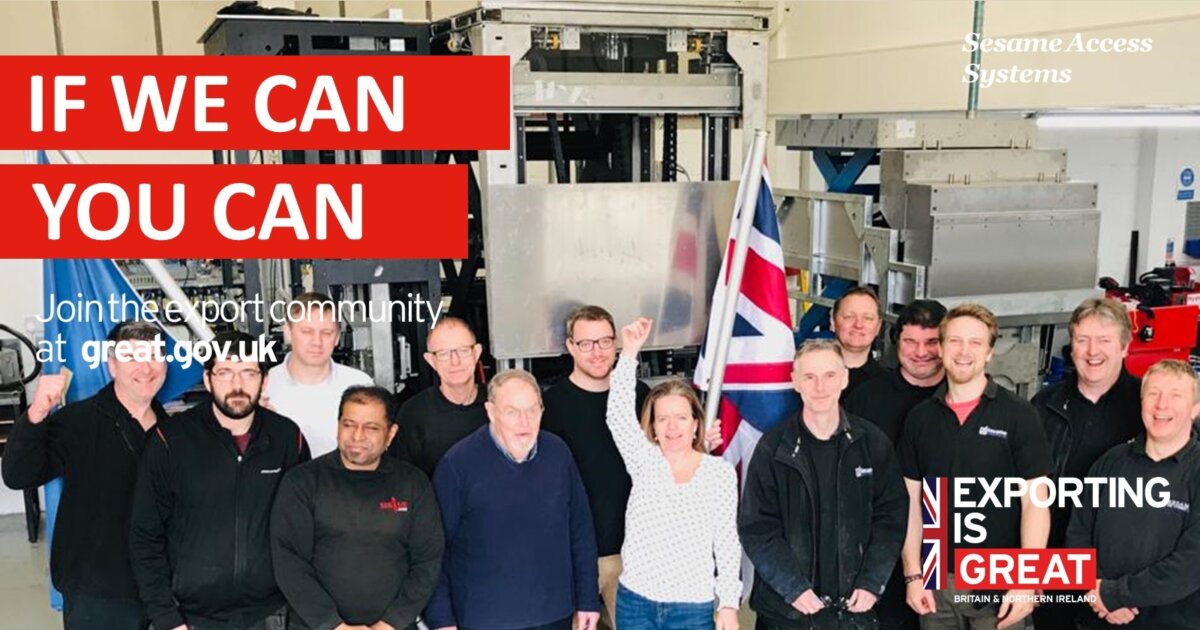Key Takeaways
-
Use a direct route to simplify customs: Avoid transit through France to remove T1 Bond requirements.
-
Apply documentation precision: The ATA Carnet export process demands exact item descriptions, weights, and serial numbers.
-
Separate temporary and permanent goods: Two parallel procedures, Carnet for tools and EAD for goods, prevent customs conflict.
-
Coordinate all stakeholders early: Exporter, agent, carrier, and client must align before departure.
-
Rely on structured export management: Sesame Access demonstrates how professional planning eliminates risk and delay.
Introduction: How Sesame Access Perfected the ATA Carnet Export Process for Bespoke Lifts
Exporting a bespoke accessibility lift from the UK to Spain requires precision at every step. The ATA Carnet export process ensures temporary goods like tools can cross borders without import duties, but when combined with permanent exports such as a lift component, documentation becomes complex.
Sesame Access turned this challenge into a structured success, managing two customs procedures, temporary and permanent, within one coordinated operation. This guide explains how the export was achieved, and how similar engineering businesses can adopt the same best practices.
What Happens When Temporary and Permanent Goods Travel Together?
A typical export often involves just one type of goods. In this case, however, Sesame engineers travelled with both temporary items (tools) and a permanent component forming part of the lift assembly.
This dual classification meant two parallel customs processes had to operate simultaneously: an ATA Carnet for the tools and a Permanent Export Declaration (EAD, MRN, GMR, and ENS) for the lift component. Mixing shipment types in a single van can lead to unexpected customs demands unless handled with care.
How Sesame Access Avoided the T1 Bond Trap
Routing decisions can make or break a customs plan. Initially, the team planned to drive through France—but that would have triggered the T1 Transit Bond requirement for the commercial component.
By switching to a direct Portsmouth–Santander ferry, Sesame avoided this trap entirely. A direct UK–Spain route limited customs oversight to one entry point and reduced paperwork complexity. The approach mirrors the logistical principles used when managing international projects like the Richmond Rising Platform Lift and Buckingham Listed Building Lift, where controlled shipment paths protect schedules and compliance.
Why the ATA Carnet Was the Right Choice for Tools
While temporary exports can be processed with a simplified declaration, Sesame opted for the more rigorous ATA Carnet process—sometimes called the “passport for goods.” This provided transparent documentation recognised across EU borders.
Every item had to be listed individually, with make, model, and serial number. The Chamber of Commerce rejected phrases like “set of screwdrivers”; each tool needed a specific quantity and description. Consumables were excluded.
This discipline reflects Sesame’s wider export ethos: detailed documentation, transparent tracking, and exact engineering traceability. Similar diligence is applied when exporting custom systems such as the Seattle ADA Lift or Westminster Equality Act Lift.
Understanding the Export Acronyms: EAD, MRN, GMR, and ENS
For the permanent component, several linked documents were required:
-
EAD (Export Accompanying Document) confirms export approval.
-
MRN (Movement Reference Number) identifies the shipment.
-
GMR (Goods Movement Reference) integrates with the ferry operator’s system.
-
ENS (Entry Summary Declaration) satisfies EU import security rules.
These documents had to be submitted before departure to enable Spanish customs clearance. Early submission prevented weekend delays when Spanish customs offices were closed.
The Four-Way Coordination That Ensures a Smooth Export
The successful shipment came down to coordination between four key stakeholders:
-
Exporter (Sesame Access) – Prepared accurate documentation and invoices for both shipment types.
-
Agent (PSP) – Produced customs entries, Carnet forms, and managed electronic filings.
-
Carrier (Brittany Ferries) – Logged shipment details with the Spanish customs portal.
-
End-Client – Authorised local agents via Power of Attorney for clearance.
This structured communication model underpins all Sesame international installations, including projects featured in How to Plan an International Accessibility Platform Lift Installation – The Madrid Case and Installing Platform Lifts Internationally.
Key Lessons for Future UK–EU Engineering Exports
-
Separate temporary and permanent goods—never mix them in one shipment.
-
Choose direct ferry routes to avoid unnecessary T1 Transit Bonds.
-
Use the ATA Carnet export process for all temporary tools.
-
Prepare item lists with precise quantities and serial numbers.
-
Ensure carriers file customs data before departure.
These principles reduce risk, minimise border delays, and keep bespoke engineering exports compliant with international trade regulations.
Related Knowledge Hub Articles
Frequently Asked Questions (FAQ)
What is an ATA Carnet?
An ATA Carnet is an internationally recognised customs document that allows temporary export of goods without paying import duties or taxes.
How long does an ATA Carnet take to process?
Typically, 3–5 working days through the Chamber of Commerce, depending on documentation accuracy.
Can I combine temporary and permanent exports in one shipment?
Yes, but they require separate customs entries. It’s safer to split them physically if possible.
What documents are needed for permanent lift exports to Spain?
You’ll need the EAD, MRN, GMR, and ENS documents—each linking your shipment to EU customs systems.
Does Sesame Access manage its own export paperwork?
Yes, all documentation and coordination with carriers and agents are managed in-house by the Sesame Access logistics team.
Next Step
If you are planning an EU export of bespoke lifts or accessibility systems, schedule a free Teams consultation with a Project Manager at:
https://www.sesameaccess.com/book-a-meeting

